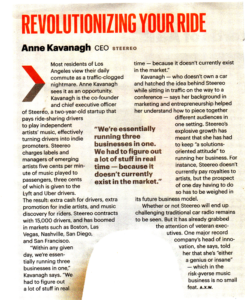History lesson about music research. First, what’s the point? Answer: To learn more about potential listeners like, then give it to them. The first research was jukebox spins. We already had the Billboard charts in the middle 50’s when Pop music radio sprouted. But that chart was compiled with record sales data and sales trailed airplay by many weeks and sometimes months, record distribution being primitive by today’s standards. Telephone requests to DJ’s was a driving force, for sure, but jukebox spins were hard data. The greatest indicator of radio programming value is the money spent to buy the tune. Or, to ‘rent’ the music with another nickle or dime in the jukebox at a diner or a pub. My opinion was that any radio music director who didn’t contact the local jukebox operators and get their weekly ‘sales’ tally either wasn’t a pro or was a slacker.
Here’s how dollar-data could give a station an edge. “Yesterday” was the fourth Beatles single to be released in 1965. The flip side was “Act Naturally” with little-heard Ringo singing lead on a Buck Owens song. This was the second year of Beatlemania. In ’64, the ‘flip’ side of most of the early singles got lots of airplay in addition the A-side but that was now less common. So here was Ringo singing a twangy Country song and stations in the big cities were less inclined to play it. I don’t know how it was going on the jukes in the north, but down South my program director, the budding radio genius Buzz Bennett knew “Act Naturally” was collecting a lot of nickles. I myself could hear it the little restaurant across the street from my high school where my classmates were playing the B-side near as much as the A-side. That was one of my earliest lessons in applied data usage. KOTN watched the listeners and followed the trends.
The first actual white-coat type research technique came to radio in the middle 70’s. Call-out Research was the name. Call a bunch of people, qualify them demographically and play them 20 or 40 short “hooks” of songs and tabulate their ratings. “Are you familiar or unfamiliar with this song?” “On a scale of one to five, with five being the best how would you rate this song?” I have good reasons to argue that this now long-established research system is bunk, a waste of time. As far as I know, my 1979 article in the industry newspaper Radio & Records tearing it down was the firsts anti-call-out article, maybe even the only one. People do love numbers and rankings and call-out produces voluminous pages of numbers.
My preface here has nothing at all to do with the article I copy below. It’s from Wired Magazine a few months ago and presents a quirky idea: The rent-a-ride as a music sales tool. If I were programming a station in Nashville, one of the cities where the company is testing it’s new thing, and if I were programming a radio station playing the type of music they’re testing in the Lyft rides, I would be interested in seeing their play data and the comparing with some other data of interest; such as the local Shazam and Spotify charts. If I saw that Lyft had played a song for a thousand riders and if I found some other data showing a bump up in hits and samples, I’d put my ear to that song. Maybe it could be a valuable song for my Current playlist.
